The ROG Matrix GeForce RTX 5090 celebrates 30 years of gaming innovation

Thirty years ago, we started designing our very first graphics card, leading to the launch of the ASUS 375 in 1996. The decades that followed were a whirlwind of innovation. Contenders rose and fell. Powered by wave after wave of new tiers of hardware, PC gaming took off and ascended to the mainstream. At every step of the journey, ASUS and ROG graphics cards pushed the boundaries with new concepts and technologies that empowered each generation to surpass the limitations of the cards that came before. Today, we’re ready to introduce an all-new graphics card that honors this legacy while carving out new territory of its own: the ROG Matrix GeForce RTX™ 5090 – ASUS Graphics Cards 30th Anniversary Edition.
As a celebration of 30 years of ASUS graphics card innovation, the ROG Matrix GeForce RTX 5090 builds on the technologies that made previous ASUS cards standout options for PC hardware enthusiasts, all while moving the series forward. Walk with us through the last three decades to learn about the tech that the ROG Matrix GeForce RTX 5090 uses as a springboard into the future.
From the ASUS graphics card pioneers: the concept of an add-in board that boosts graphics performance
We couldn’t start this list without honoring the very first ASUS graphics cards. 3D graphics acceleration wasn’t unheard of back in the mid-1990s, but it wasn’t exactly common, either. The ASUS 375, launched in 1996, revolutionized the graphics card manufacturing process, making this component more accessible to a wider audience.
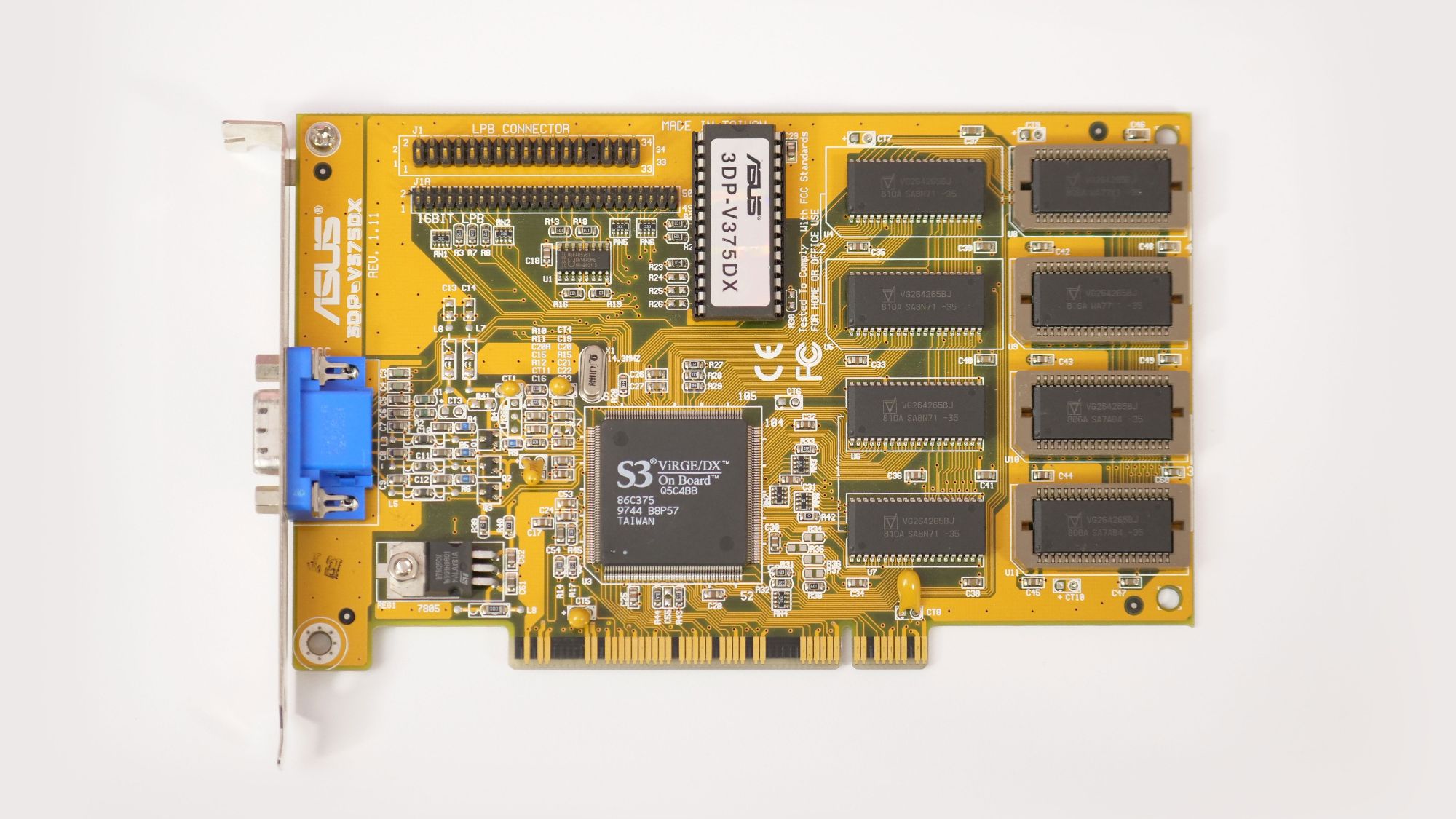
ASUS products that followed over the next decade refined and experimented with the formula. The ASUS AGP-V3000, launched in 1997, was the first graphics card with fully integrated support for Direct3D. The 2002 ASUS V8200 DLX offered standout aesthetics as the first card with a premium black PCB, while also offering the highest overclocking capability.
Recognizing that the power supplies of the era weren’t always ready to support cutting-edge graphics cards, we launched the ASUS EN7800GT Dual in 2005. This unit could be supplied with power through either an internal or external power supply. The ROG Matrix GeForce RTX 5090 takes that concept to the next level with a dual power input design — more on that later.
From the 2008 ASUS EN9800GT Matrix: user-friendly overclocking
Back in 2006, we launched the Republic of Gamers, a division within ASUS devoted to helping hardcore tweakers harness the full potential of their CPUs and GPUs while also making performance easy to unlock for new recruits. The ASUS EN9800GT Matrix, launched in 2008, empowered users to fine-tune overclocking settings to achieve peak performance. Its software included a dynamic overclocking mechanism which could boost the clock speed under heavy workloads.
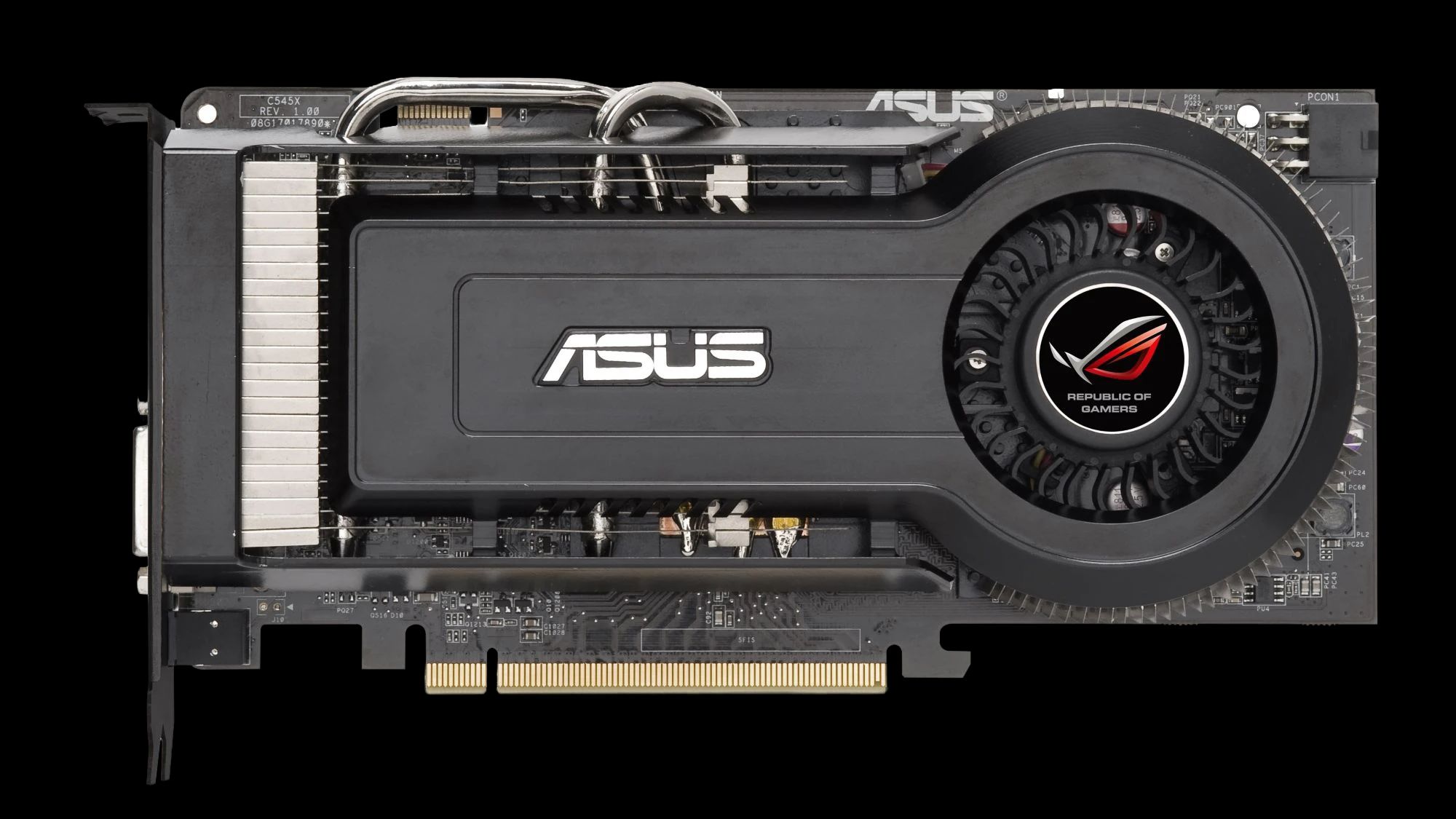
That legacy of user-friendly overclocking continues today with GPU Tweak III, the ultimate GPU tuning tool. You can boost GPU performance through OC Mode with just one click, and you can do this with any modern graphics card. The VF Tuner is easier to use than ever, giving advanced users a powerful and versatile tool for discrete management of the GPU boost curve. Even PC novices can get in on the action with easy adjustment sliders on the GPU Tweak III home page. For your ROG Matrix GeForce RTX 5090 — or any graphics card that you’re running in your gaming rig — GPU Tweak III is the easiest, most powerful tool for getting the exact experience that you’re looking for.
From the 2010 ROG Ares and 2013 ROG Ares II: A full-copper vapor chamber
The earliest graphics cards we offered didn’t need anything special in the way of cooling, but as GPUs and VRAM became increasingly powerful, these chips started producing more heat under load. To compensate, we launched our first graphics card with a fan-enhanced heatsink back in 1998.
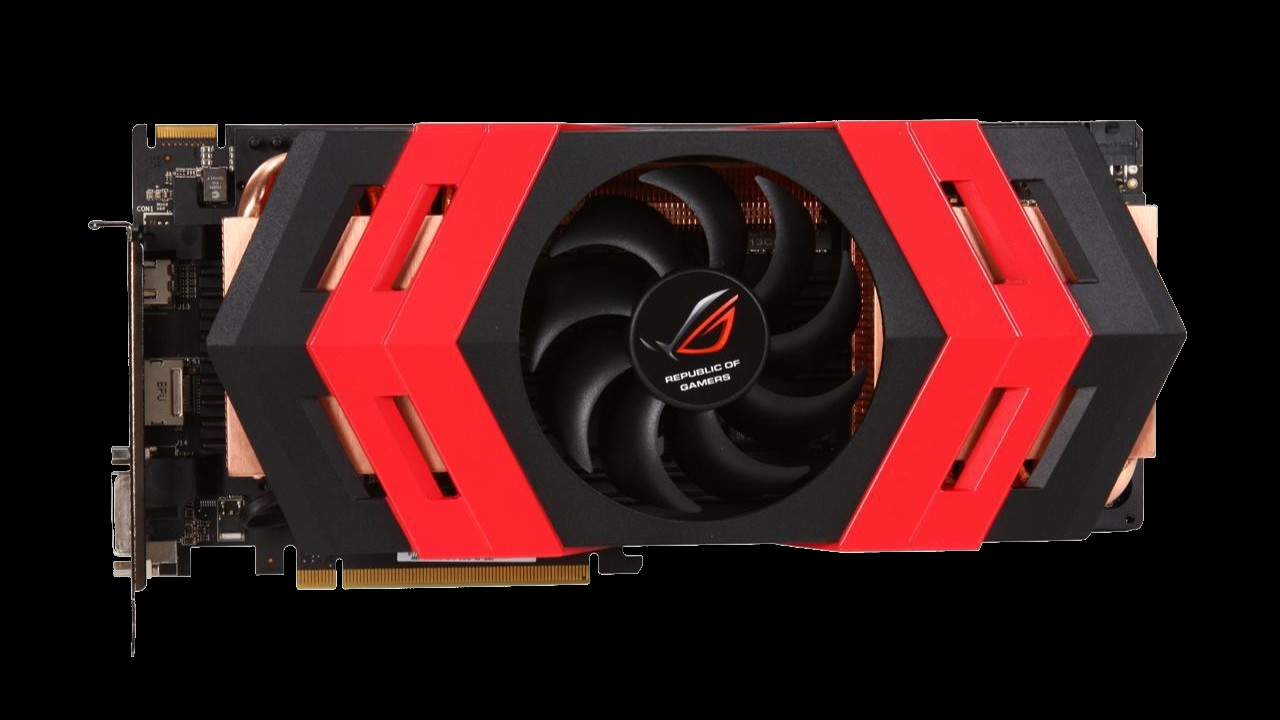
The importance of cooling only increased over the years that followed. In 2010, we debuted the ROG Ares, a card that wielded a hybrid cooling solution that allowed enthusiasts to hit and sustain high overclocks. Its heatsink was constructed of copper from top to bottom due to this metal’s excellent thermal conductivity. Its successor, the ROG Ares II, took a step further with an integrated vapor chamber that allowed for enhanced heat dissipation.
Today, most modern GPUs have a copper base and aluminum fins to balance cooling efficiency, weight, and cost. But for the ROG Matrix GeForce RTX 5090, we’re taking you back in time to when copper was king. It’s armed with a full-copper vapor chamber using our latest patented technology for outstanding cooling performance. Exterior accents offer a metallic sheen for a look that will warm the heart of any gamer who built a PC back in the era of the ROG Ares.
From the 2011 ROG Mars II Dual GTX 580: a PCB with 3 oz copper layers
As graphics cards demanded more power in general, and as overclocking enthusiasts kept pushing all boundaries, further innovation was needed at the level of the printed circuit board (PCB). For the ROG Mars II Dual GTX 580, a dual-GPU card launched in 2011, we threw out all the stops with a PCB featuring 3 oz copper layers. With thicker copper traces across the PCB, this graphics card offered reduced voltage drops, allowing for more stable high-end overclocking. All that extra copper also allowed for better and more even heat dissipation, too, helping with VRM cooling in particular.
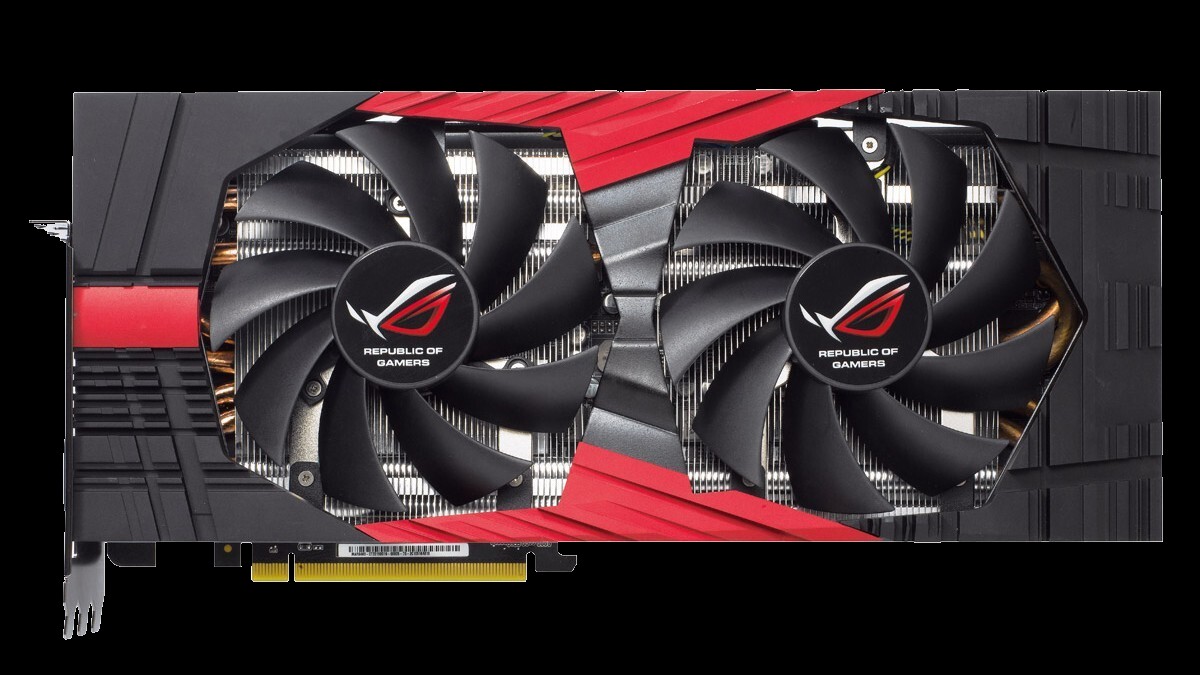
The ROG Matrix GeForce RTX 5090 gives you the option to unleash its performance by boosting its power draw, so we’re going above and beyond yet again with its PCB design. Like the ROG Mars II Dual GTX 580, it meets the moment with thick 3 oz copper layers in its PCB.
From the 2013 ROG Matrix GeForce GTX 780 Ti: 0dB cooling and Memory Defroster technology
When you’re fully immersed in a game, the fan noise produced by your graphics card is probably a secondary concern, especially if you tend to play while wearing a gaming headset. But when you’re using your PC for other tasks, a noisy GPU can be a distraction. Back in 2014, we released the ROG Matrix GeForce GTX 780 Ti, a graphics card that was equally ready for all-out performance while gaming and unobtrusive operation for everyday computing.
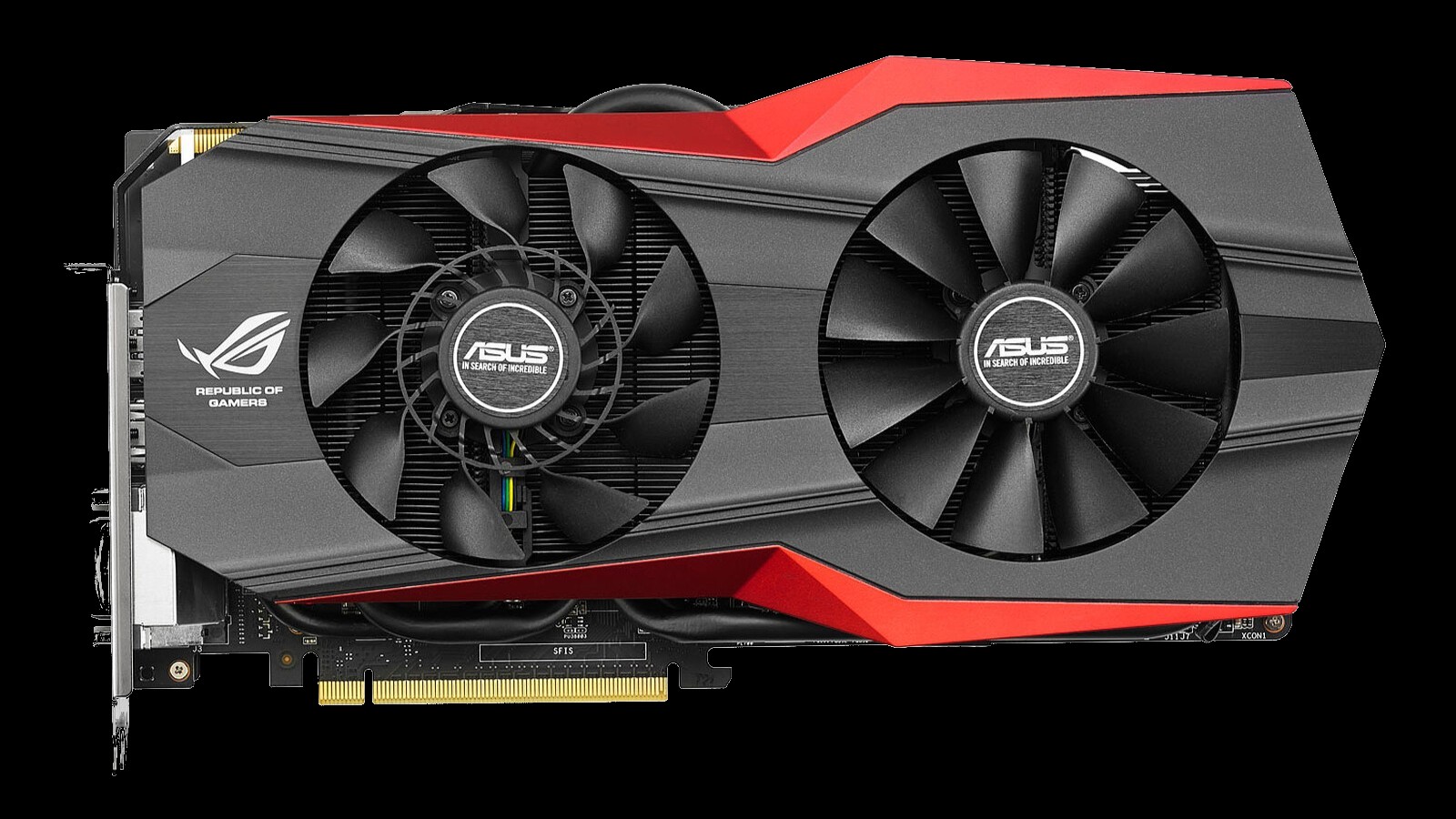
The key advancement was 0dB fan technology. To eliminate unnecessary noise, the card’s fans stopped altogether whenever temperatures and power consumption dropped below specific targets, allowing it to fly under the radar. The ROG Matrix GeForce RTX 5090 takes the same approach, ramping up its impressive fan array to keep its internals comfortable under pressure, and spinning them down entirely whenever possible.
The new ROG Matrix also brings back an extreme LN2 overclocking feature that debuted with the ROG Matrix GeForce GTX 780 Ti: Memory Defroster. This feature, accessible through a jumper, defrosts the memory chips so that professional overclockers can avoid memory cold bugs when chasing new world records.
From the 2014 ROG Strix GeForce GTX 980: Auto Extreme tech and a dual BIOS switch
To ensure long-lasting reliability and a great out-of-the-box experience with our graphics cards, we’re always evaluating and refining our manufacturing processes. Back in 2014, we debuted Auto Extreme Technology, a fully automated manufacturing process that allowed all soldering to completed in one pass, ensuring more consistent quality from one card to the next. This process is also more environmentally friendly than traditional manufacturing, requiring half the power and none of the harsh chemicals.
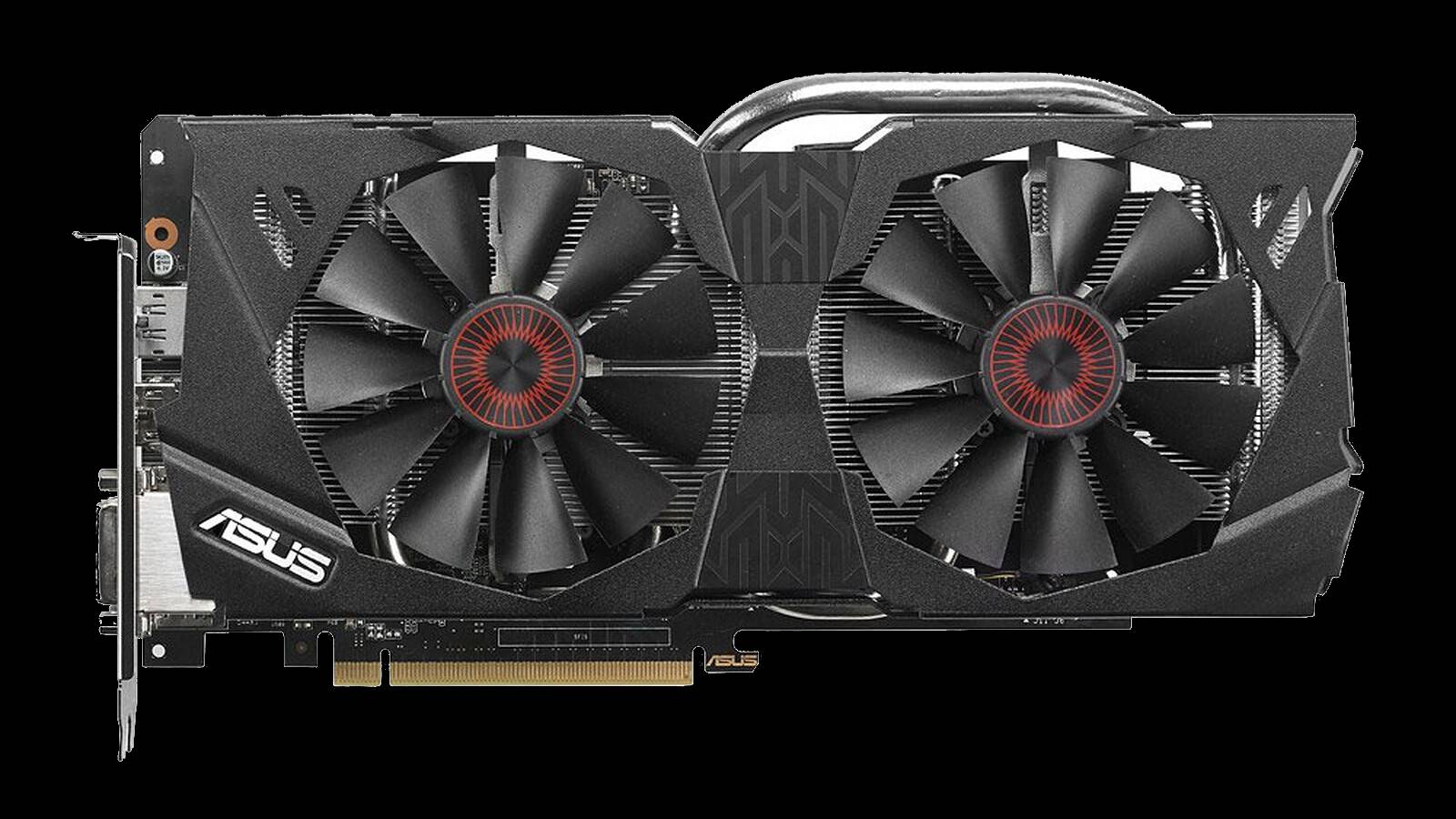
The first card to benefit from Auto Extreme Technology was the ROG Strix GeForce GTX 980, but that’s not the only feature of that card to make a repeat appearance in the ROG Matrix GeForce RTX 5090. The elder card was our first to feature a Dual BIOS switch. This physical switch, which you’ll also find on the new ROG Matrix GeForce RTX 5090, gives you an easy way to toggle between two modes, one that prioritizes quiet operation and one that prioritizes GPU and thermal performance. It’s a lifesaver for any enthusiast who dials in an overly aggressive overclock, as they can flip over to the other mode with the dual BIOS switch and successfully reboot their system.
From the 2017 ROG Strix GeForce GTX 1080: Dual HDMI ports, FanConnect headers, and MaxContact manufacturing
NVIDIA’s 10 Series graphics card lineup took a big jump forward with performance, and we seized the opportunity to elevate the ROG options with features that set them apart from the competition. The ROG Strix GeForce GTX 1080 became a favorite among multi-monitor enthusiasts thanks to its rich output options. Offering two HDMI 2.0 ports in addition to its DVI port and two DisplayPort 1.4a ports, it made it easy to hook up many displays. To this day, many ROG graphics cards offer dual HDMI ports when many competitors only offer one. The ROG Matrix GeForce RTX 5090 carries that tradition forward with more modern options. You’ll get two DisplayPort 2.1 ports and two HDMI 2.1 ports with it.
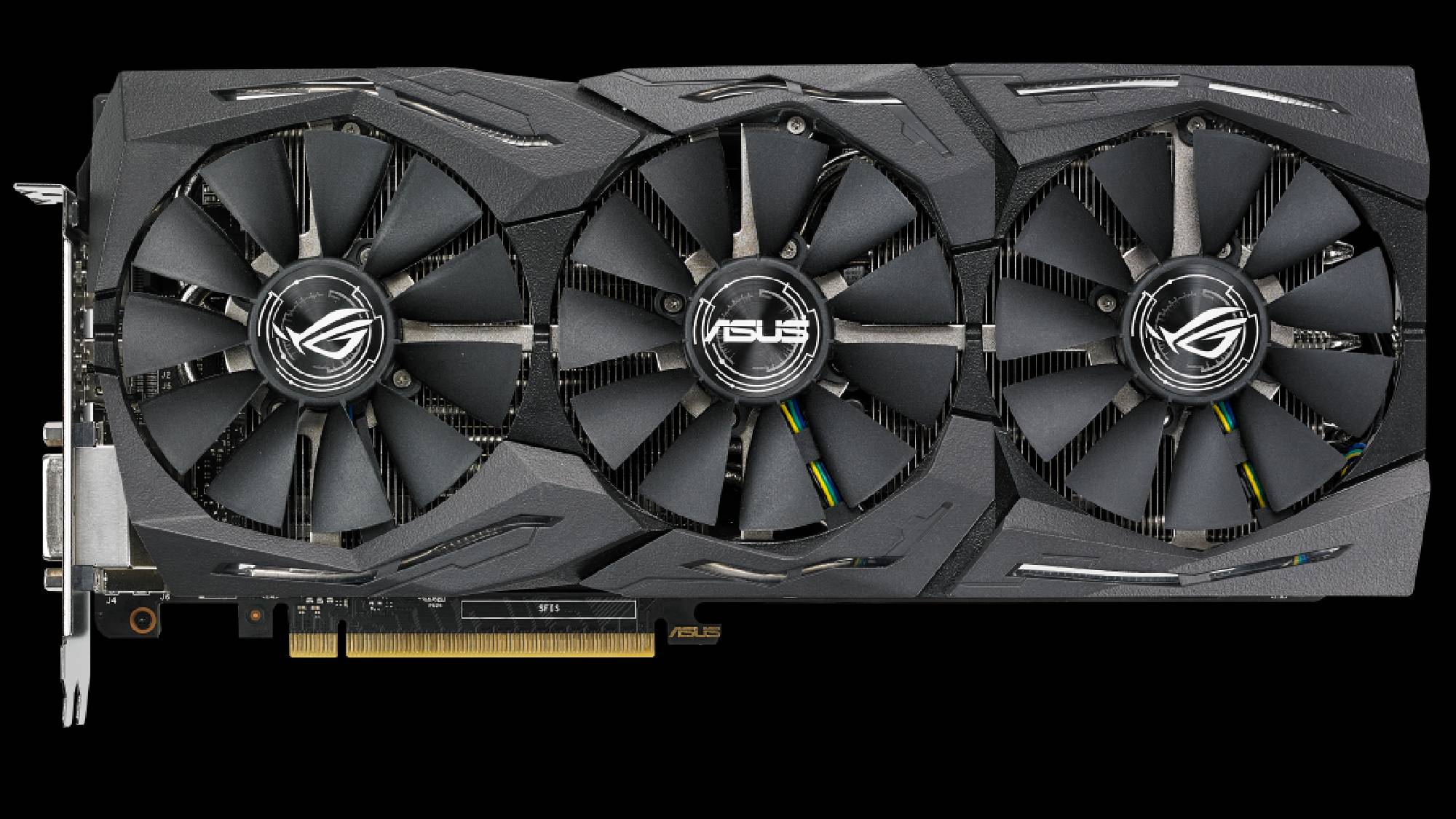
ROG FanConnect also debuted with the ROG Strix GeForce GTX 1080, and is a staple in our ROG cards to this day. Our first generation of this technology was developed in response to the reality that games tend to put a much bigger workload on a graphics card than a CPU, yet the case fans in most builds are designed to ramp up with CPU temperatures, not GPU temperatures. ROG FanConnect headers, located on the ROG Matrix GeForce RTX 5090, will let your case fans adjust in real-time to GPU temperatures, giving your graphics card additional cooling air when it needs it the most.
Finally, the ROG Strix GeForce GTX 1080 was also our first card to benefit from MaxContact, a manufacturing process that we’re used for nearly every graphics card since. This process effectively expands the surface area of the heat spreader that sits atop the GPU by 5% compared to traditional designs, helping to reduce GPU temperatures under load.
From the 2020 ROG Strix GeForce RTX 3090: Power sensing circuitry
Getting a snug, secure connection between your power supply and graphics card is crucial. Back in 2020, we debuted a new feature with the ROG Strix GeForce RTX 3090 to give PC builders peace of mind on this front. This card’s power-sensing circuitry would give you a heads up through a static LED light if you had neglected to connect the card to your PSU through its 1x16 pin power connector. That same light would pulse if the graphics card received insufficient wattage.
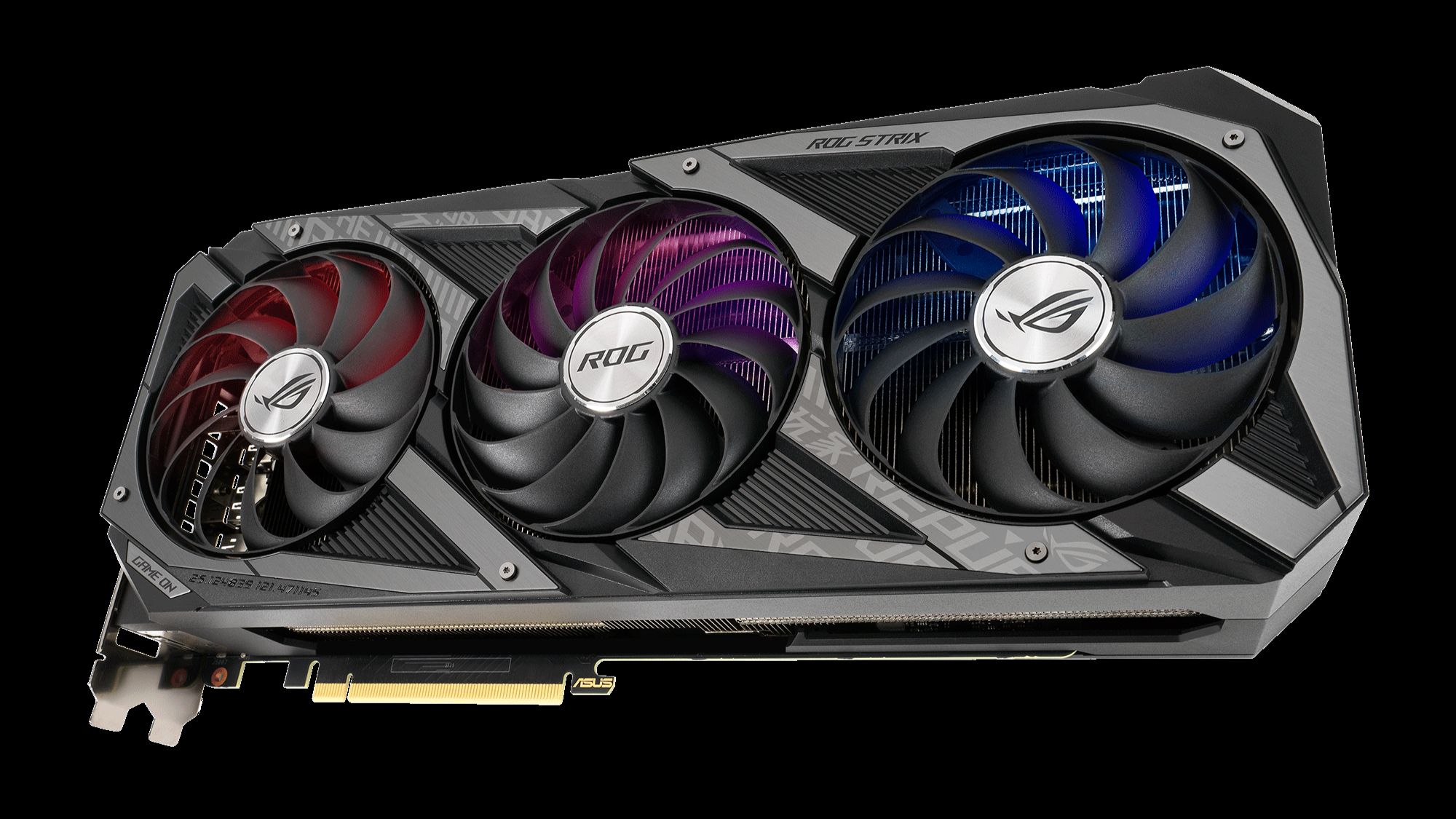
The LEDs proved so valuable for builders that we offered them on our high-end NVIDIA 40 Series and NVIDIA 50 Series lineups, as well, including the upcoming ROG Matrix GeForce RTX 5090.
Though the ROG Strix GeForce RTX 3090 made practical use of LED illumination, it had some fun with them, too. It wasn’t the first ASUS graphics card with RGB LEDs, but it was the first to go all-in on the lightshow with an addressable RGB LED array. The ROG Matrix GeForce RTX 5090 also offers customizable ARGB illumination that’s ready to be synced up with the rest of your compatible gear through ASUS Aura Sync.
From the 2023 ROG Matrix GeForce RTX 4090: Liquid metal, voltage detector, and software goodies galore
Our last ROG Matrix card, the ROG Matrix GeForce RTX 4090, launched back in 2023. That card’s main claim to fame was an integrated liquid cooling loop. If you’re looking for a graphics card with out-of-the-box liquid cooling today, the ROG Astral LC GeForce RTX 5090 beckons.
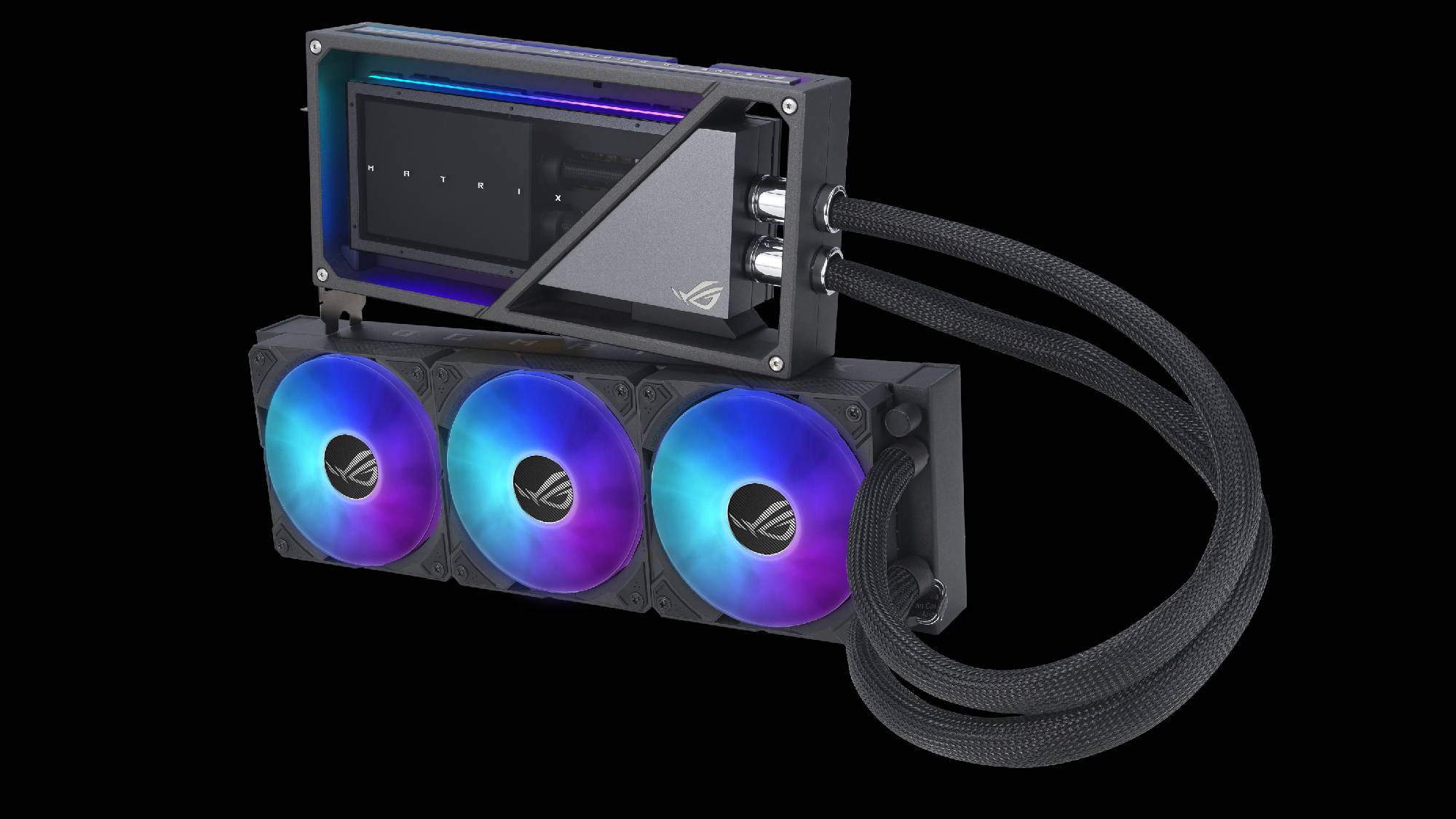
The ROG Matrix GeForce RTX 5090 instead carries forward a different cooling feature from its previous-gen forebear. The ROG Matrix GeForce RTX 4090 was the first ROG card equipped with liquid metal thermal compound on a graphics card, and we’re proud to bring it back for its successor. Liquid metal’s unique properties make it an incredible thermal interface material, as it’s capable of producing much lower temperatures than traditional thermal pastes. We apply this material through a patented production process that can safely harness the power of liquid metal while still allowing for vertical GPU mounting.
We also debuted some important software features with the ROG Matrix GeForce RTX 4090 that will return with the ROG Matrix GeForce RTX 5090, including the highly-lauded Power Detector+. This feature can detect anomalies across any of the power pins from the 12V-2x6 cable. If a fault is detected, you’ll be notified immediately to reseat the power cable accordingly. Next, you’ll also have access to Thermal Map, which gives you real-time temperature info from embedded sensors across the VRMs, chokes, and memory chips so that you can perfectly optimize your hardware. Finally, you’ll also have the mileage feature, which tracks usage at different power levels so you can keep an eye on what kind of load you’ve used across multiple game sessions.
From the 2025 ROG Astral GeForce RTX 5090: A fourth fan
At the vanguard of our NVIDIA 50 Series lineup, just launched in 2025, is the ROG Astral GeForce RTX 5090. This graphics card has consistently outperformed its rivals on the competitive overclocking circuit and remains a favorite among PC builders who dare to build a supremely powerful machine, partially thanks to its fourth fan. We integrated this fan into the backplate of the card to create a powerful vertical airflow channel. Boosting static pressure by up to 20%, this arrangement allows us to increase the density of the heatsink fans in this region, resulting in a 10% increase in heatsink surface area for premium thermal performance.

This quad-fan arrangement returns with the ROG Matrix GeForce RTX 5090. We refined the characteristics of the fan array for our second go-around with this feature, giving you an optimal blend of performance, thermals, and acoustics.
From the 2025 ROG Astral GeForce RTX 5090 BTF: Dual power input
Now that so many PC builders opt for cases with multiple tempered glass panels, achieving a clean build uncluttered with wires and cables is more important than ever. Our BTF ecosystem of motherboards and graphics cards gives you a way to hide the wires thanks to rear-facing connectors on BTF motherboards.
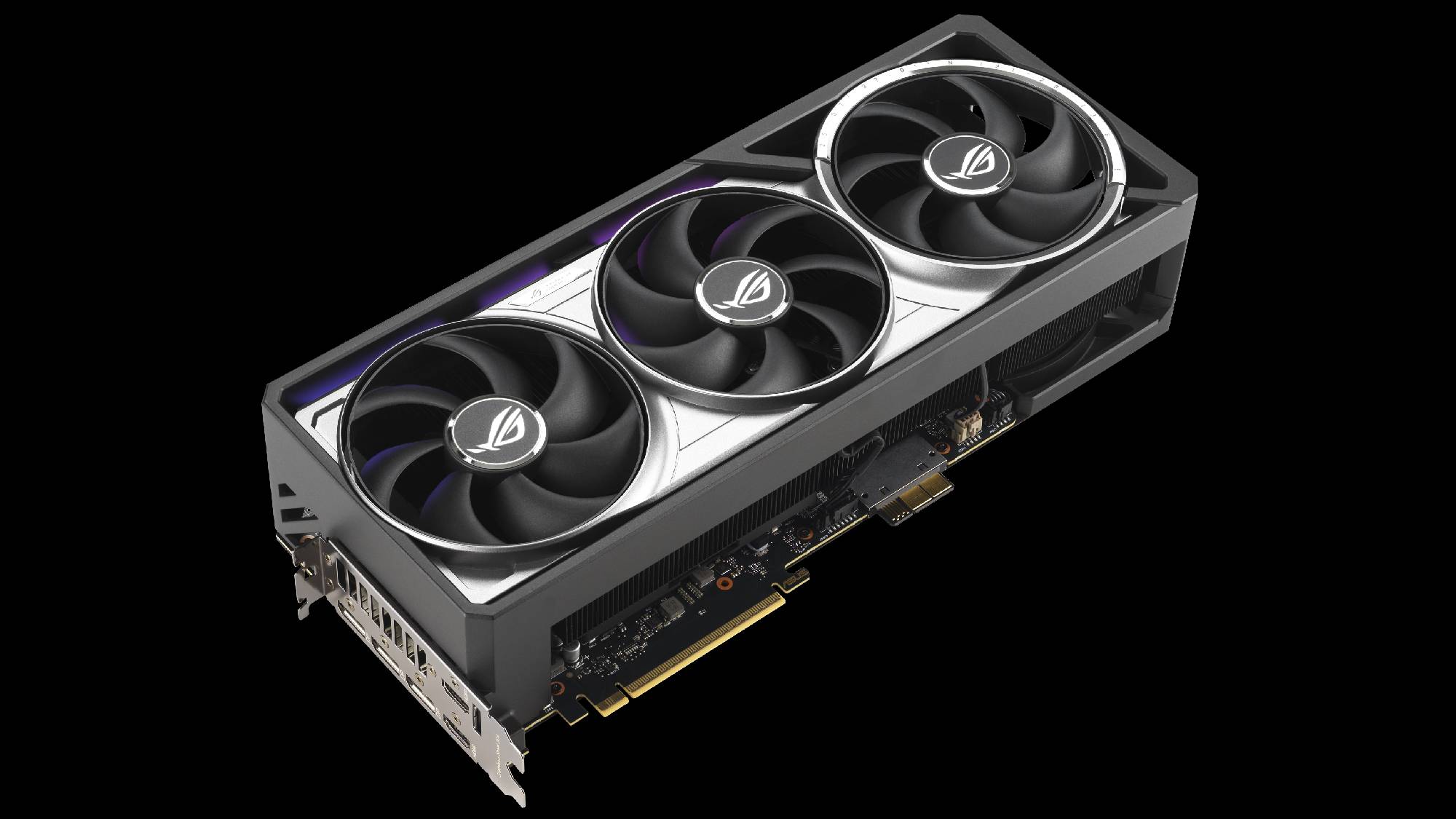
For our first graphics card combining NVIDIA 50 Series performance and the clutter-reducing aesthetic of BTF, we launched the ROG Astral GeForce RTX 5090 BTF. For compatibility with both standard and BTF motherboards, the card can draw power through either a standard 12V-2x6 connector or the GC-HPWR gold finger connected to a BTF motherboard. A detachable adapter ensures that the GC-HPWR gold finger doesn’t interfere with installation on a standard motherboard.
When we first announced this graphics card, some folks wondered if the card could achieve even more performance by drawing power through both the 12v2x6 connector and the GC-HPWR gold finger simultaneously. The answer is no — at least, not without some tinkering.
But for the ROG Matrix GeForce RTX 5090, the answer to that question is an enthusiastic yes. Standard GeForce RTX 5090 graphics cards can draw up to 600 watts, the maximum available through a 12V-2x6 cable. The ROG Matrix GeForce RTX 5090 refuses to accept those limitations. It can draw up to 800W when it’s plugged into an advanced BTF motherboard and plugged directly into a power supply through a 12v2x6 cable.
Ready to shatter some GPU performance records? The ROG Matrix GeForce RTX 5090 is. We’re ready to draw a line in the sand and make some bold claims about this graphics card. Judging by raw gaming performance or thermal performance, the ROG Matrix GeForce RTX 5090 surpasses any other graphics card on the market as of August 2025. Nothing else would be worthy of the name ROG Matrix. Want to one-up this card? You’ll need to bring your A-game.
A formal introduction to Level Sense
It’s been the worst-kept secret of our NVIDIA 50 Series graphics card launch: from the start, our ROG Astral models included a hardware-level sensor on the PCB comprising a gyroscope and accelerometer. Internet sleuths not only found these sensors, but concluded that they could be used to monitor the angle of the card, helping users to identify and correct GPU sag before it gets unsightly or causes damage.
Today, we’re ready to confirm that the online detectives of the world were correct on all these fronts. Behind the scenes, we’ve been working on software that can make use of the data provided by this sensor, and the result of our efforts is a new feature in GPU Tweak III called Level Sense. After you’ve updated to the latest version of the app, you’ll be able to open Level Sense to check whether your graphics card is installed on the level. If you’d like, you can also run a calibration to lock in its current position so that you can receive a popup notification should your card ever drop past the threshold that you specify.
Our current plan is to roll out Level Sense support in GPU Tweak III in stages, starting with the ROG Matrix GeForce RTX 5090 and ROG Astral GeForce RTX 5090 BTF. Stay tuned for more information.
An aesthetic design that balances retro cool with modern style
The ROG Matrix GeForce RTX 5090 owes much to the thirty years of ASUS graphics cards which preceded it. But when it comes to its visual design, it’s in a league of its own, offering tributes to former Matrix designs while carving out its own path. It starts with clean, straightforward surfaces that put a spotlight on the metallic sheen of the accents around the exterior frame of the shroud.
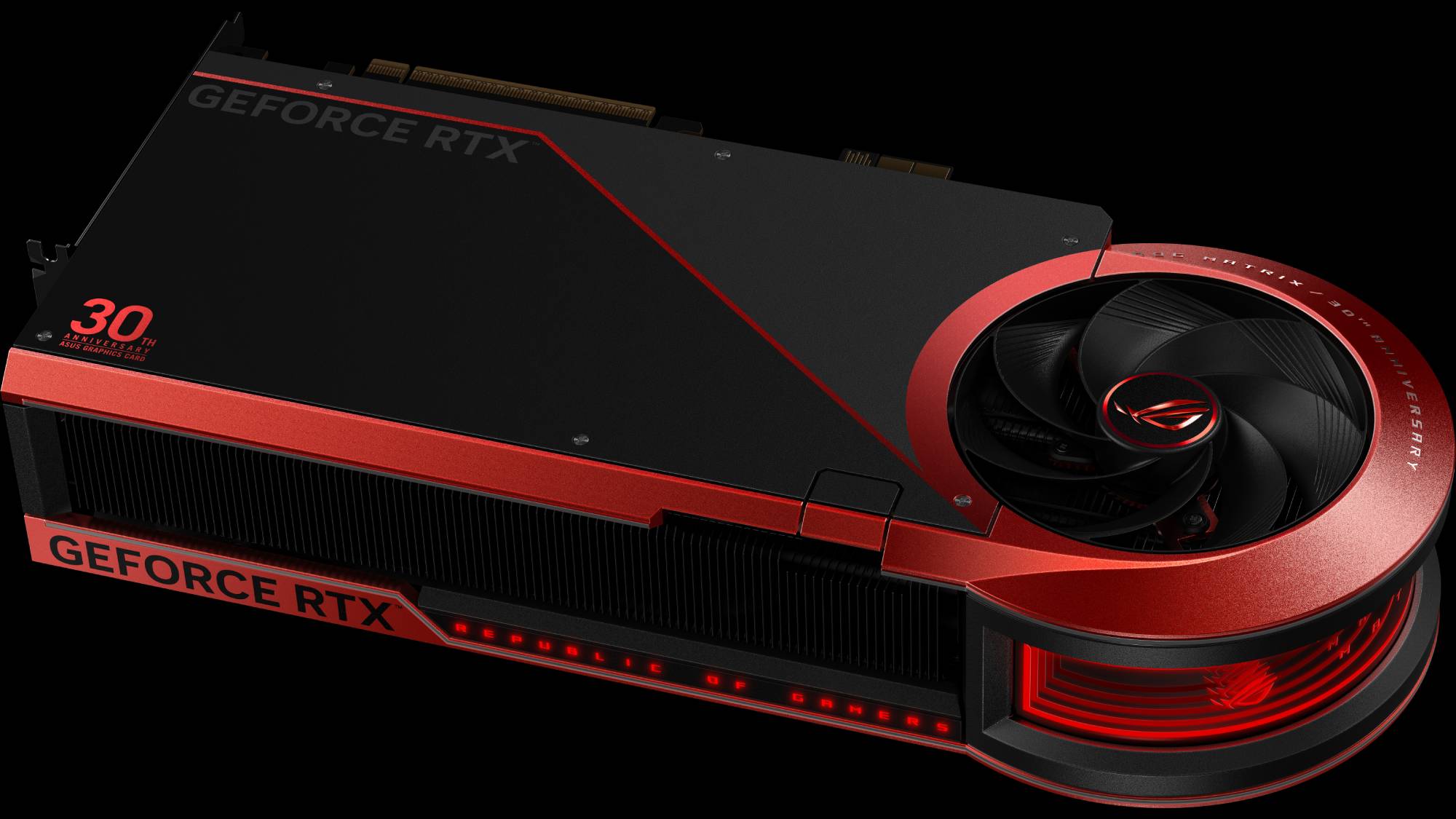
The neat rectangular geometry of the card is juxtaposed with a circular frame that surrounds the two stacked fans at the end of the card, breaking the plane of the GPU shroud for an unmistakable silhouette. Additionally, this design creates a rounded surface that we adorn with a multidimensional translucent panel. Paying tribute to the “infinity mirror” light design that appeared on the ROG Matrix GeForce RTX 2080 Ti, this rounded panel lights up with an unmistakable lightshow. Whether you mount this graphics card horizontally or vertically, the ROG Matrix GeForce RTX 5090 will draw all eyes.
The ROG Matrix GeForce RTX 5090 stakes its claim for GPU supremacy
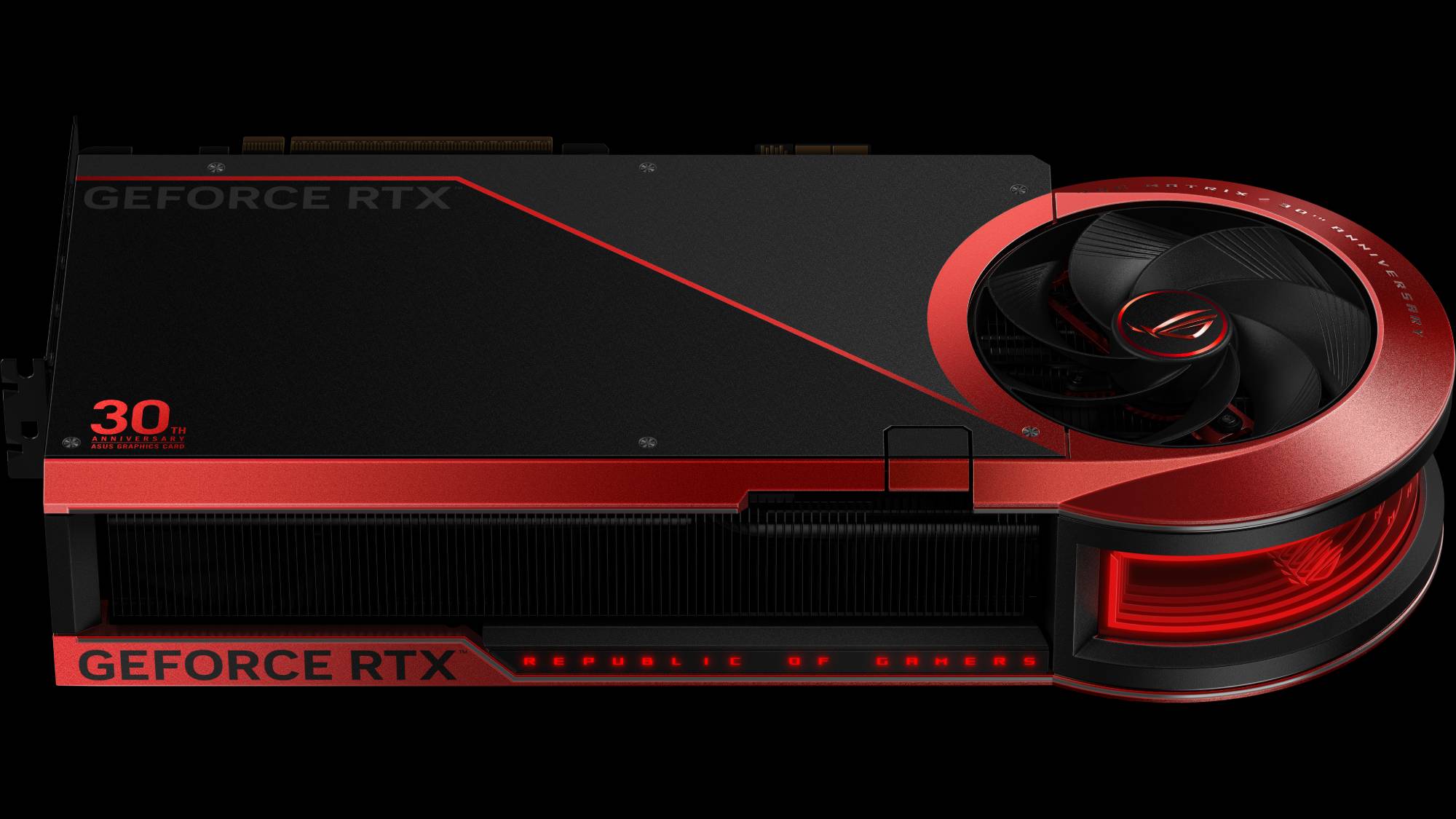
For thirty years now, we’ve been building graphics cards, taking each new generation as an opportunity to refine our manufacturing techniques, deploy new innovations, and give enthusiasts of all stripes new options for their high-performance PCs. The ROG Matrix GeForce RTX 5090 – ASUS Graphics Cards 30th Anniversary Edition gives you a unique opportunity to celebrate that history with a graphics card that’s infused with legacy and primed for record-smashing performance.
The ROG Matrix GeForce RTX 5090 is just one way that we’re celebrating thirty years of graphics card innovation. We’re also running a special Cheers to 30 Years giveaway event. For a limited time, you can enter to win a range of exciting prizes by visiting our Cheers to 30 Years virtual amusement. Ride virtual attractions, collect points, and use those points to enter raffles for ROG gear, including select ROG peripherals, apparel, and, of course, NVIDIA® GeForce RTX™ 50 Series graphics cards. The event runs from July 8, 2025 to October 7 2025. Terms and conditions apply. Visit the event page for all the details.
We're also debuting a wide range of hardware alongside the ROG Matrix GeForce RTX 5090 at Gamescom 2025. To check out our latest monitors, peripherals, PC gaming handhelds, and more, click here.
Author
Popular Post
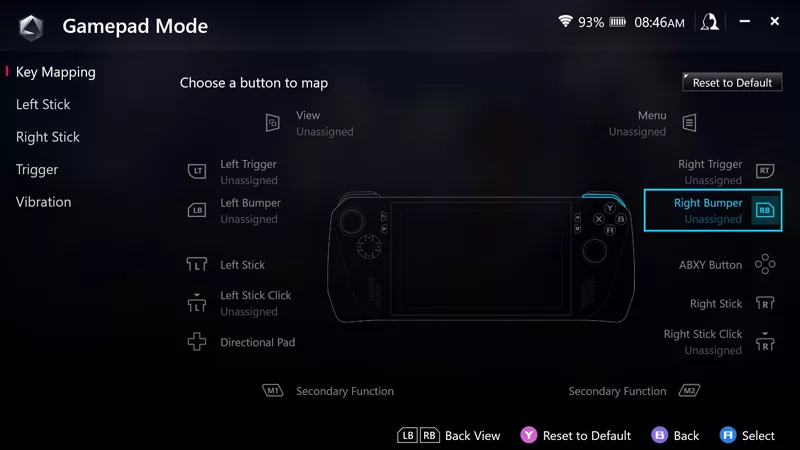
How to remap buttons and create custom game profiles on the ROG Ally or Ally X

The best laptop-friendly PC games you can play without any peripherals
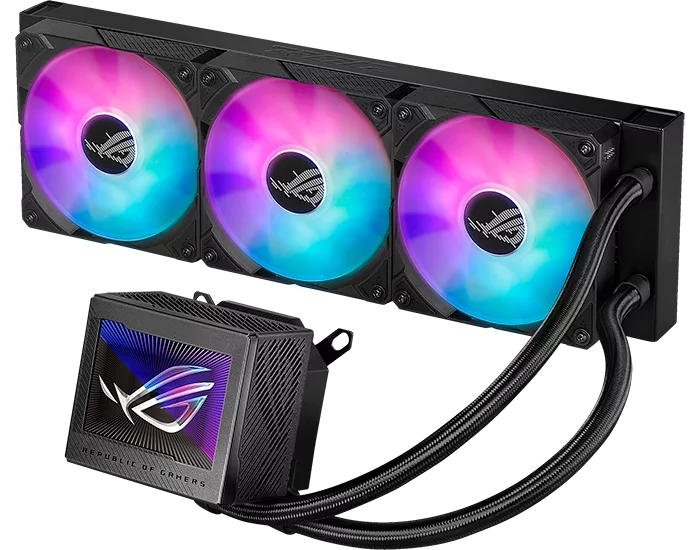
ASUS Republic of Gamers Announces Ryujin III All-in-One CPU Cooler Series
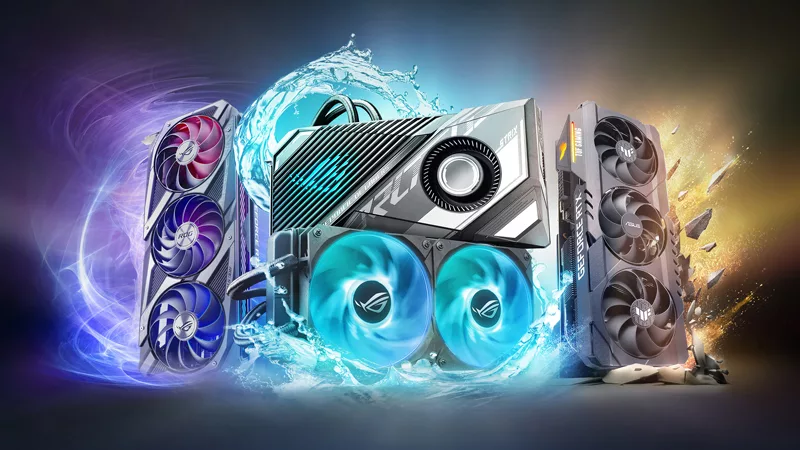
ROG Strix vs TUF vs Dual and beyond: Which ASUS graphics card is right for you?

How to play games offline with the ROG Ally and ROG Xbox Ally
LATEST ARTICLES
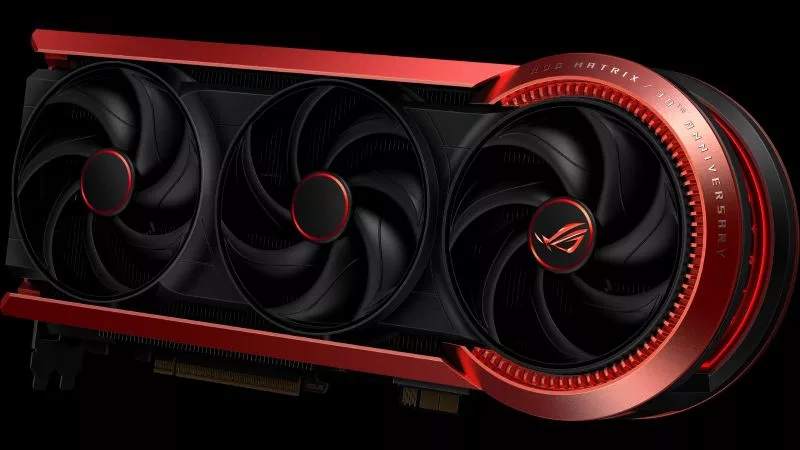
The ROG Matrix GeForce RTX 5090 celebrates 30 years of gaming innovation
One graphics card, 30 years of legacy. Here's how the new ROG Matrix learns from the past while forging its own path into the future.

The ROG Strix GeForce RTX 5070 Ti brings next-gen style and power to PC gamers everywhere
Our ROG Strix GeForce RTX 5070 Ti packs incredible performance inside a gorgeous exterior that tells the world you play hard.
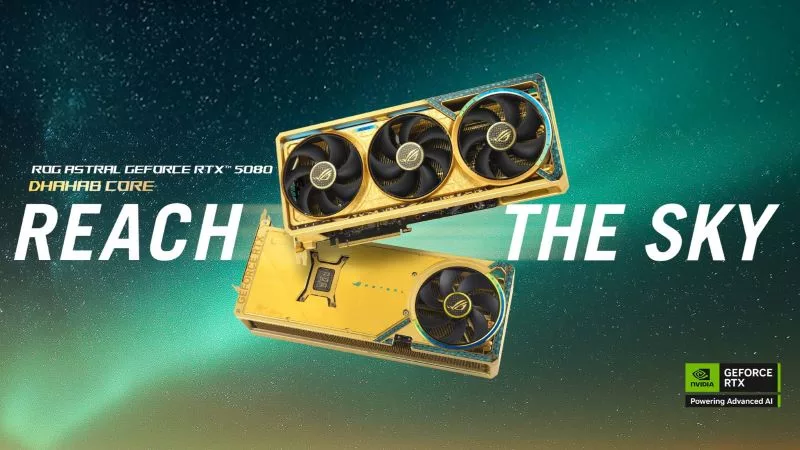
Rizz up your rig with the golden ROG Astral GeForce RTX 5080 Dhahab CORE OC Edition
ROG Astral graphics cards are built to take style and performance to new frontiers. The ROG Astral GeForce RTX 5080 Dhahab CORE OC Edition is no exception.
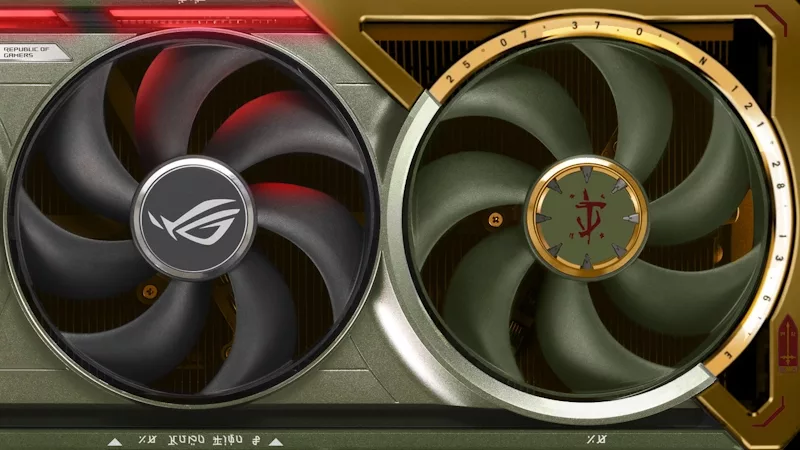
ROG and DOOM: The Dark Ages collide in the ROG Astral GeForce RTX 5080 OC DOOM Edition graphics card
Bold gaming performance meets the iconic style of the DOOM Slayer in the form of one unconquerable graphics card.
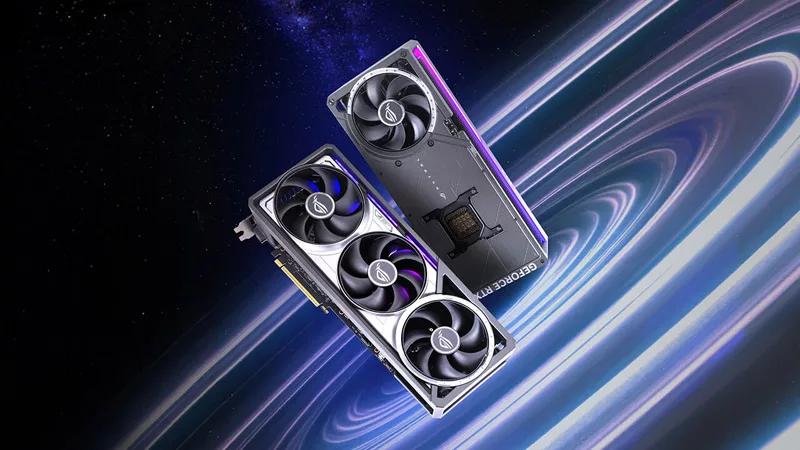
Introducing the ROG Astral GeForce RTX 5090 and 5080: a new frontier of gaming graphics
The NVIDIA GeForce RTX 50 series of GPUs has landed, and to usher in this new generation of graphics performance, we’re launching a new line of graphics cards.
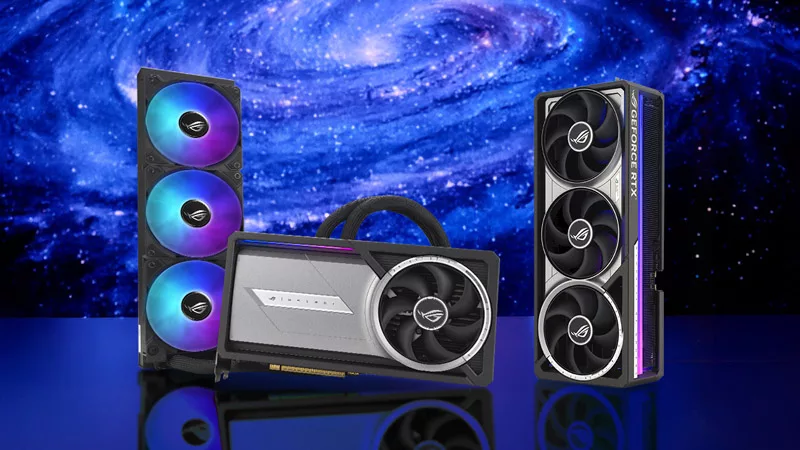
Air vs Liquid Cooling for the RTX 5090: Are AIO GPUs better?
The latest NVIDIA GeForce RTX 5090 is an incredible GPU, no doubt. But is a liquid-cooled RTX 5090 worth stepping up to over an air-cooled RTX 5090?